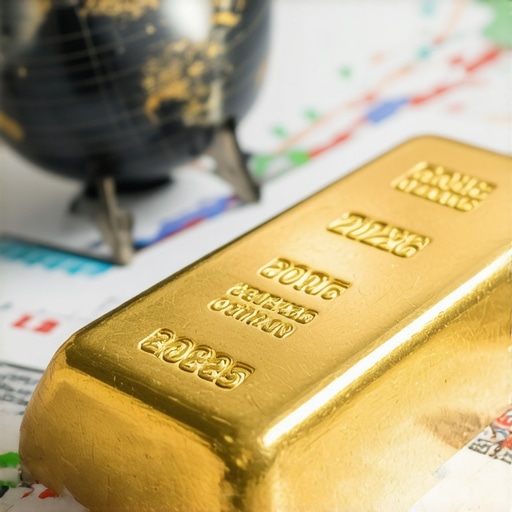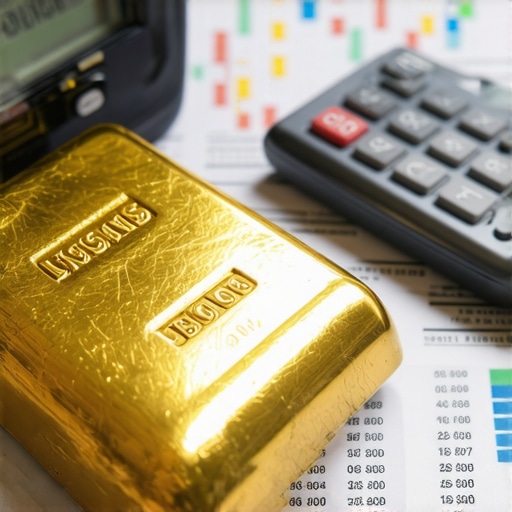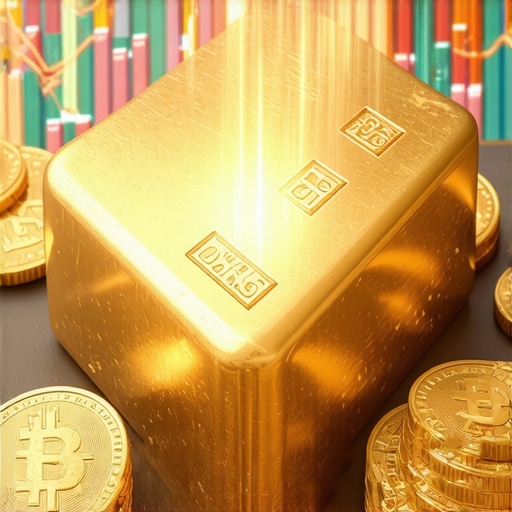Unveiling the Complex Dynamics of Gold Demand and Price Drivers in 2025
As a seasoned analyst in precious metals markets, I recognize that understanding the intricate interplay between global economic factors and evolving consumer behaviors is vital for predicting gold’s trajectory in 2025. This year, gold remains a pivotal asset, not merely as a store of value but as a barometer of economic stability and geopolitical resilience. In this context, dissecting demand trends and future price drivers becomes essential for investors seeking to optimize their portfolios and hedge against volatility.
What Are the Underlying Factors Shaping Gold Demand in 2025?
How Do Geopolitical Tensions Influence Gold Consumption?
Geopolitical uncertainties continue to fuel gold demand, especially in emerging markets where gold is often seen as a safe haven investment. Events such as regional conflicts and diplomatic disputes tend to boost physical gold purchases, particularly in countries like India and China, which are leading consumers in the jewelry and investment sectors. These demand surges are corroborated by recent reports from the World Gold Council, indicating that geopolitical risk remains a dominant driver of gold demand in 2025.
What Role Does Technological Innovation Play in Gold Investment?
Technological advancements, including the proliferation of gold-backed ETFs and blockchain-enabled trading platforms, have democratized access to gold investments. These innovations facilitate liquidity and transparency, attracting a broader investor base. Consequently, gold’s role in diversified portfolios has expanded, with institutional investors increasingly integrating gold ETFs and mutual funds as strategic hedges.
Exploring Future Price Drivers: Supply Constraints and Market Sentiment
Will Central Bank Policies Continue to Support Gold Prices?
Central bank gold reserves and policies significantly influence market sentiment. As many central banks adopt a cautious stance amidst inflationary pressures and currency fluctuations, their gold purchase strategies can propel prices upward. Notably, the International Monetary Fund notes that official sector purchases are expected to remain robust in 2025, underpinning gold’s stability as a reserve asset.
How Will Supply and Mining Trends Impact Gold Prices?
Supply-side constraints, including declining mine outputs and geopolitical restrictions in key gold-producing regions, are poised to tighten available supply. Analyzing gold supply-demand cycles reveals that reduced mining yields, coupled with rising demand, could elevate prices. Market intelligence suggests that exploration investments will need to accelerate to meet future demand, which might not be sufficient given current geopolitical and environmental challenges.
What Are the Emerging Investment Strategies for 2025?
Investors are advised to adopt diversified strategies, including physical gold holdings, gold ETFs, and exposure to gold mining stocks. Developing a long-term gold investment plan that considers macroeconomic indicators, inflation trends, and currency stability is crucial. For detailed insights on building a resilient gold portfolio, you can explore this comprehensive guide.
Understanding these multifaceted demand and supply dynamics, supported by expert market insights, enables investors to navigate the complexities of gold investment in 2025 confidently. Staying informed about global economic trends, geopolitical developments, and technological innovations will be essential for maximizing returns and safeguarding wealth.
Understanding the Impact of Market Sentiment and Macroeconomic Factors on Gold Prices in 2025
Market sentiment plays a pivotal role in driving gold prices, especially as investors become increasingly sensitive to global economic shifts and geopolitical tensions. Sentiment can be influenced by a range of macroeconomic indicators such as inflation rates, currency fluctuations, and economic growth forecasts. For instance, heightened inflation often leads investors to seek tangible assets like gold as a hedge, which can accelerate price appreciation. Conversely, periods of economic stability and strong dollar performance may dampen gold demand, influencing its market trajectory.
How Do Technological Innovations and Digital Asset Integration Reshape Gold Investment?
Are Gold-Backed Digital Assets a Game Changer for Investors?
Emerging financial technologies, notably blockchain and digital asset platforms, are revolutionizing gold investment landscapes. Gold-backed tokens and digital wallets facilitate easier, more transparent transactions, broadening access for retail and institutional investors alike. This dynamic introduces a new layer of liquidity and diversification, enabling investors to incorporate gold into a broader digital asset strategy. Experts suggest that integrating gold with blockchain technology can enhance portfolio resilience, especially in volatile markets, by offering real-time tracking and secure ownership transfer. To explore practical approaches, investors can consult resources like this guide to diversifying with gold ETFs and mutual funds.
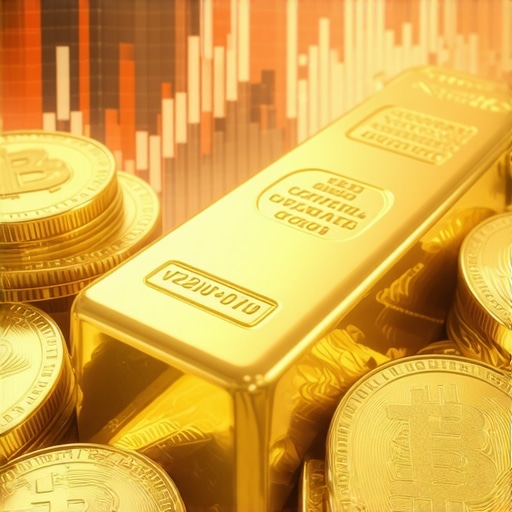
Can Central Bank Policies and Global Economic Trends Sustain Bullish Gold Markets?
Central bank policies remain a cornerstone influence on gold prices. As monetary authorities navigate inflation control and currency stabilization, their gold reserve management can either bolster or suppress prices. Notably, countries like Russia and China have increased their gold reserves in recent years, signaling a strategic shift towards gold as a safeguard against currency devaluation. According to a report by the World Gold Council, central bank gold purchases are expected to stay robust through 2025, reinforcing gold’s role as a global reserve asset and supporting its price stability.
What Are the Practical Strategies for Investors to Capitalize on These Trends?
Investors should consider a multi-faceted approach, combining physical gold holdings, gold ETFs, and mining stocks, aligned with a comprehensive long-term plan. Developing an understanding of supply-demand cycles and macroeconomic indicators can help in timing market entries and exits. For tailored guidance, visiting this strategic resource can provide valuable insights for building a resilient gold portfolio.
Staying ahead of market developments by monitoring expert analyses, such as those from market forecasts and price drivers, will empower investors to make informed decisions and maximize their wealth preservation efforts in 2025 and beyond.
Deciphering the Interplay of Global Macroeconomics and Gold Price Trends in 2025
As we delve deeper into the intricacies of the gold market, it becomes evident that a nuanced understanding of macroeconomic indicators, geopolitical shifts, and technological advancements is paramount for sophisticated investors aiming to forecast gold prices accurately in 2025. These elements do not operate in isolation; rather, they intertwine to shape market sentiment and influence investment flows.
How Do Currency Fluctuations and Inflation Expectations Interact to Drive Gold Value?
Currency dynamics are fundamental to gold’s valuation. A depreciating dollar often correlates with rising gold prices, as investors seek a hedge against currency devaluation. Simultaneously, inflation expectations—particularly in the context of expansive monetary policies—amplify gold’s appeal as a tangible store of value. According to the International Monetary Fund’s latest reports, inflationary pressures are expected to persist in several major economies, reinforcing gold’s role as a safe haven in 2025. This relationship underscores the importance of monitoring real interest rates, which inversely impact gold’s attractiveness.
What is the nuanced impact of real interest rates on gold prices?
Real interest rates, which account for inflation, are inversely related to gold prices. When real yields fall below zero, gold becomes more appealing due to the opportunity cost of holding non-yielding assets. Conversely, rising real yields tend to suppress gold demand, as investors favor interest-bearing assets. The Federal Reserve’s policies and the European Central Bank’s stance on inflation control will significantly influence these rates, and consequently, gold’s market trajectory.
Advanced Market Sentiment and Technical Analysis: Tools for 2025 Prediction
Beyond macroeconomic fundamentals, sophisticated investors leverage technical analysis and sentiment metrics. Tools such as the Relative Strength Index (RSI), Moving Average Convergence Divergence (MACD), and market sentiment surveys provide granular insights into potential turning points. These indicators, combined with geopolitical risk assessments, enable a multi-dimensional approach to forecasting. For instance, a divergence between price action and sentiment indicators could signal an impending trend reversal, offering strategic entry or exit points.
How Will Emerging Technologies and Digital Assets Influence Gold’s Investment Landscape?
Blockchain innovations and digital asset platforms are transforming gold investment paradigms. Gold-backed tokens, such as those issued on Ethereum or other blockchain networks, facilitate fractional ownership and instantaneous transfers, reducing traditional liquidity barriers. According to a study by the World Gold Council, the integration of blockchain tech has the potential to democratize access to gold investments, appealing to a broader demographic and institutional players alike. This evolution invites investors to consider hybrid strategies that incorporate physical gold, digital tokens, and blockchain-based custody solutions for optimal diversification.
<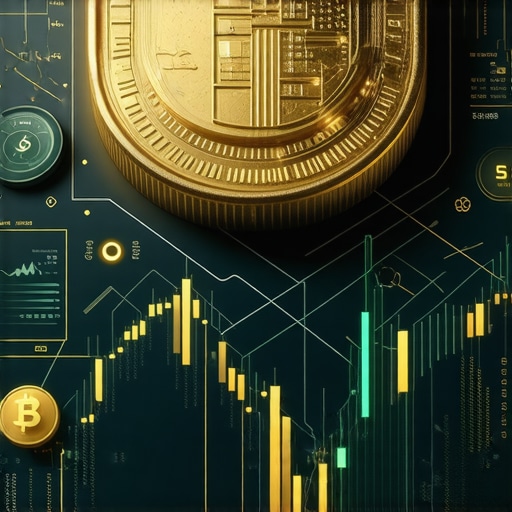 >
>
Implications of Geopolitical Stability and Technological Adoption on Gold Prices
Geopolitical stability remains a critical variable. Escalating conflicts or diplomatic impasses tend to elevate demand for safe-haven assets like gold. Conversely, breakthroughs in technology, including advancements in mining sustainability and resource efficiency, could influence supply dynamics. For example, innovations in environmentally friendly mining techniques could mitigate environmental concerns and stabilize supply, thus impacting prices.
Investors seeking a competitive edge should continuously monitor geopolitical developments, technological innovations, and central bank policies. Engaging with expert analyses, such as those published by the World Gold Council or leading financial think tanks, can refine investment strategies and enhance resilience in volatile markets.
Next Steps for Astute Investors: Crafting a Forward-Looking Gold Portfolio
Building a resilient gold investment portfolio for 2025 involves integrating physical assets, ETFs, futures, and emerging digital tokens. Tailoring allocation based on macroeconomic forecasts, real interest rate projections, and geopolitical risk assessments is crucial. For personalized guidance, consider consulting specialized resources like this expert-designed framework.
As the landscape evolves, maintaining an adaptive approach—rooted in thorough analysis and real-time data—is essential for maximizing returns and safeguarding wealth in an increasingly complex global economy.
Unraveling Advanced Factors Shaping Gold’s Future in 2025
As global financial ecosystems become increasingly interconnected, a comprehensive understanding of multifaceted influences on gold prices is essential for sophisticated investors. This involves analyzing not only macroeconomic indicators but also technological innovations, geopolitical shifts, and evolving market sentiment, which collectively craft the complex landscape of gold investment in 2025.
How Are Emerging Technologies Revolutionizing Gold Investment Strategies?
What is the impact of blockchain and digital tokens on gold liquidity and ownership?
Blockchain technology is fundamentally transforming gold trading by enabling fractional ownership through digital tokens, which facilitate secure, real-time transfers and enhance liquidity. These innovations democratize access to gold, allowing retail investors to participate in global markets with unprecedented ease, while institutional players benefit from increased transparency and efficiency. According to the World Gold Council’s recent reports, blockchain-enabled gold trading platforms are poised to expand significantly, reshaping conventional investment paradigms.
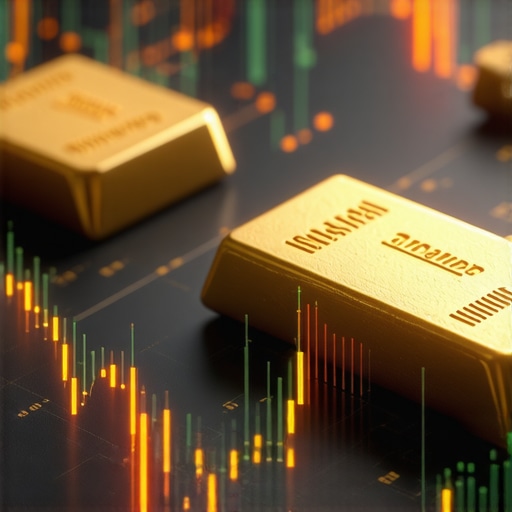
Investigating the Nuances of Central Bank Policies and Their Long-Term Impact on Gold
Central banks’ strategic accumulation or divestment of gold reserves remains a critical driver of market sentiment. As geopolitical tensions persist and monetary authorities navigate inflationary pressures, their reserve management can act as a stabilizing force or a catalyst for price fluctuations. Notably, nations like Russia and China are increasingly diversifying reserves into gold, signaling a shift toward gold as a safeguard against currency devaluation, which the IMF highlights as a persistent trend into 2025.
How Do Real Interest Rates and Inflation Expectations Interact to Influence Gold Valuation?
What is the sophisticated relationship between real yields and gold demand?
Real interest rates, adjusted for inflation, are inversely correlated with gold prices. Negative real yields diminish the opportunity cost of holding non-yielding assets, thus elevating gold’s appeal. Conversely, rising real yields incentivize investment in interest-bearing assets, suppressing gold demand. The Federal Reserve’s policies on inflation targeting and interest rate adjustments are pivotal in shaping these dynamics, with their decisions directly impacting gold’s attractiveness as a hedge.
Advanced Market Sentiment and Technical Indicators for 2025 Forecasting
Utilizing sophisticated analytical tools such as RSI, MACD, and sentiment indices enables investors to detect subtle market shifts. Divergences between technical signals and fundamental data often prelude major trend reversals, offering strategic entry or exit points. Combining these indicators with geopolitical risk assessments and macroeconomic forecasts enhances predictive accuracy, equipping investors with a competitive edge in volatile markets.
What Strategic Investment Approaches Will Dominate in 2025?
Developing a resilient gold portfolio requires integrating physical holdings, ETFs, futures, and digital assets, aligned with macroeconomic outlooks and geopolitical risk profiles. Diversification across these asset classes mitigates risks and capitalizes on evolving market opportunities. For tailored strategies, consulting resources like this expert guide offers invaluable insights into crafting a forward-looking investment plan.
Expert Insights & Advanced Considerations
1. Geopolitical Tensions Will Continue to Drive Safe-Haven Demand
As geopolitical uncertainties persist, especially in key regions like Eastern Europe and the South China Sea, gold’s role as a safe-haven asset will remain prominent. Investors should monitor diplomatic developments and conflict escalations, as these directly influence physical gold purchases and market sentiment.
2. Technological Innovations Will Democratize Gold Investment
Blockchain platforms and gold-backed digital tokens are revolutionizing access to gold markets, enabling fractional ownership and real-time trading. Staying informed about these technological trends will be critical for strategic portfolio diversification in 2025.
3. Central Bank Policies Will Significantly Impact Gold Prices
Central banks’ gold reserve strategies, particularly in emerging economies, are shifting towards accumulation as a hedge against currency devaluation. The ongoing policies of major reserve holders like China and Russia will influence market dynamics and price levels.
4. Supply Constraints Will Tighten Market Availability
Declining mine yields and geopolitical restrictions in key producing regions suggest a constrained supply environment. Investors should consider how these supply-demand imbalances could propel gold prices higher in the short to medium term.
5. Market Sentiment and Technical Analysis Will Enhance Forecasting Accuracy
Advanced tools such as RSI, MACD, and geopolitical risk assessments will be instrumental in timing market entry and exit points. Integrating these analyses into investment strategies can maximize returns and mitigate risks.
Curated Expert Resources
- World Gold Council: Provides authoritative market reports and insights on supply-demand trends and central bank activities, essential for deep analysis.
- IMF Reports on Global Economics: Offers comprehensive macroeconomic data, inflation forecasts, and currency stability analyses critical for understanding gold’s valuation context.
- Blockchain and Digital Asset Platforms: Leading platforms like Gold-backed tokens on Ethereum and other blockchain networks facilitate innovative investment opportunities and portfolio diversification.
- Financial Think Tanks (e.g., Brookings, Peterson Institute): Publish expert analyses on geopolitical risks, monetary policy impacts, and future market trends.
Final Expert Perspective
In navigating the evolving landscape of gold investment for 2025, integrating macroeconomic insights, technological advancements, and geopolitical intelligence is paramount. Gold’s demand and price dynamics are becoming increasingly complex yet offer unparalleled opportunities for the astute investor. To deepen your understanding and refine your strategies, explore our comprehensive resources and consider engaging with industry experts. Your ability to anticipate these multifaceted influences will ultimately determine your success in leveraging gold as a resilient asset class in the years ahead.







